While the protests in China were initially born out of shared dissatisfaction against the COVID-19 policy, people soon found themselves going into different directions, ideologically and physically, notes Xiaoyu Lu, an International Relations scholar based in Beijing. This was a polyphonic movement, fragmented and divided, blended with various demands and interests, making it difficult to tell where it was going next, he writes for The Diplomat:
Meanwhile, protesters made pre-emptive counterarguments before the authorities used the old argument associating public dissent with foreign intervention. People questioned the presence of “hostile foreign forces” after three years of strict border control, and voices calling for a “neutral and rational stance” attracted nothing but mockery and sarcasm.
In short, the authority’s ideological methods used to suppress dissents in the past are losing their effectiveness, Lu observes. Most crucially, the protests shook the belief that the younger generation were either depoliticized subjects or narrow-minded nationalists.

Ai Wei Wei/Twitter
Dissident Chinese artist and activist Ai Weiwei believes the protests are “a big deal,” but he doesn’t see them bringing about significant political change. “I don’t think that’s possible,” he told The Associated Press.
“What (is) clear is the new generation of young people from China — students or young workers — they start to be more clear about what kind of government China is and maybe also (demand) political change,” he said. “But that would take a long time.”
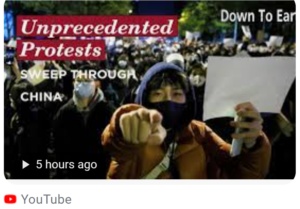 A young Chinese painter in Italy began using Twitter to publish content forwarded by censor-wary netizens in China. His account, “Teacher Li Is Not Your Teacher”, became a critical conduit for information about the protests against covid-19 restrictions that erupted across China last month, The Economist reports:
A young Chinese painter in Italy began using Twitter to publish content forwarded by censor-wary netizens in China. His account, “Teacher Li Is Not Your Teacher”, became a critical conduit for information about the protests against covid-19 restrictions that erupted across China last month, The Economist reports:
Participants and spectators sent him loads of images and eyewitness accounts by direct message. By reposting many, he played an important role in conveying the scale of the unrest to others, in China and abroad. He also gained almost 600,000 new followers and 387m visits to his Twitter profile in November alone…..Chinese netizens are becoming more inventive, too, posting political messages on dating sites or in the comments section of otherwise uncontroversial content. Artificial intelligence does not spot sarcasm easily, so under official posts on social media, many left messages simply repeating the Chinese word for “good”.
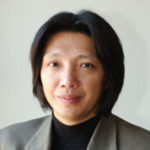 Xiao Qiang (right), research scientist and the founder of China Digital Times, underscored the importance of the Sitong Bridge protests for inspiring the recent protests. The Sitong Bridge and the current demonstrations were “so different from previous ones in the last thirty years” because their focus went beyond COVID-19: They also targeted the government’s censorship and Xi’s leadership, he told the Digital Forensic Research Lab.
Xiao Qiang (right), research scientist and the founder of China Digital Times, underscored the importance of the Sitong Bridge protests for inspiring the recent protests. The Sitong Bridge and the current demonstrations were “so different from previous ones in the last thirty years” because their focus went beyond COVID-19: They also targeted the government’s censorship and Xi’s leadership, he told the Digital Forensic Research Lab.
Zhou Fengsuo, a Tiananmen student leader and president of Humanitarian China, said regardless of the outcome of the movement, it has helped the younger generation to understand the importance of “taking their fate into their own hands.”
“This is also the spirit of the Tiananmen Square protests when young people no longer wanted to accept a life under control,” he told DW News. “Chinese people have turned Twitter, Instagram, and Telegram into virtual ‘squares’ for them to gather, share information, and mobilize. The situation is even better than the Tiananmen protests because the CCP can’t easily intervene or easily control ideologies circulating in these ‘cyber squares.'”
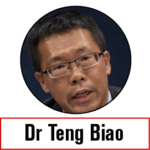
Credit: RFA
China’s ‘zero-COVID’ policy has sparked demonstrations in the country’s major cities, leading police to conduct random searches to look for photos and messages about the protests, CBC News adds. Teng Biao, a Chinese human rights activist, lawyer and academic living in exile in the U.S., discusses the censorship regulations (above).
China’s recent “white paper revolution” found protesters, in an anti-authoritarian collective gesture, displaying blank sheets of paper, a strategy conceived both to baffle specific censorship and accommodate many readings, The Times adds.
The recent social eruption should not be surprising, says Claremont McKenna professor Minxin Pei, a National Endowment for Democracy (NED) board member; frustrations over the Chinese government’s rigid zero-COVID policy have been brewing for a long time. Yet the ruling Communist Party of China (CPC) apparently did not see the protests coming, despite operating an all-pervasive and deeply intrusive surveillance apparatus.

Minxin Pei
China’s leaders can probably count on the security forces to snuff out new protests, thereby allowing the CPC to reassert control and downplay people’s frustrations, he writes for Project Syndicate. But the reluctance to devise a comprehensive and systematic [Covid] exit strategy – and to take responsibility for its outcomes – could result in China experiencing the worst of both worlds.
Xi has not spoken publicly about the protests, and it is unclear how far the displays of dissent played into his decision to adjust policy. But plenty of Chinese people seem to believe that the nationwide defiance played a big role. They may now try to keep up pressure in smaller ways, The Times reports.
“I think what’s going to happen is people will coordinate, it will be low-level, it will look individualized and spontaneous, but there will be learning and discussion behind the scenes,” said Mary Gallagher, a professor at the University of Michigan. “That’s what you need to do in a politically repressive environment,” she said. “It’s really going to put pressure on the local governments not to lock down.”
Wheel of history spinning in reverse
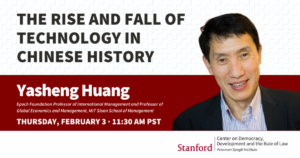 “Many connect China’s Covid protest to 1989, but a more apt comparison is 1976,” Yasheng Huang, a China scholar at M.I.T., told Jiayang Fan. At their heart is not as much defiance as desperation.
“Many connect China’s Covid protest to 1989, but a more apt comparison is 1976,” Yasheng Huang, a China scholar at M.I.T., told Jiayang Fan. At their heart is not as much defiance as desperation.
The latest protests have drawn from a similarly broad swath of society, as students and workers alike have gathered to express their grief and outrage. Chen Jun, a native of Shanghai and founder of the magazine Voice of Democracy, said that such spontaneous eruptions of mass emotion are destabilizing for the leadership, she writes for The New Yorker.
For the past decade in China, under Xi Jinping, the wheel of history seems to be spinning in reverse. “Since Xi’s rule, Chinese society has been regressing to Maoist-era levels of fear and repression, so it’s no wonder that it feels like 1976,” said Chen. RSVP
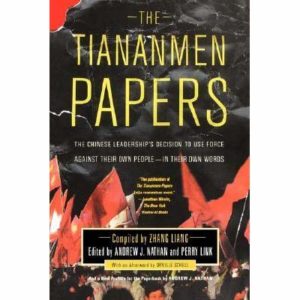 Many years ago, when I was a Beijing correspondent covering the Tiananmen protests, a young man put the nation’s aspiration this way: “We have rice, but we want rights,” Nicholas Kristof writes for The Times. In the latest protests, slogans were similar: “We want freedom, not lockdowns. We want votes, not a ruler. We want dignity, not lies. We are citizens, not slaves.”
Many years ago, when I was a Beijing correspondent covering the Tiananmen protests, a young man put the nation’s aspiration this way: “We have rice, but we want rights,” Nicholas Kristof writes for The Times. In the latest protests, slogans were similar: “We want freedom, not lockdowns. We want votes, not a ruler. We want dignity, not lies. We are citizens, not slaves.”
Xi’s zero Covid policy was the paradigmatic policy mistake of an authoritarian ruler, adds Andrew Nathan, Class of 1919 Professor of Political Science at Columbia University, and author of “The Tiananmen Papers.”
Uniquely among modern regimes, Mr. Xi assumed, China possessed the organizational capacity to impose the wide-ranging, fine-grained social controls to stop the disease, he writes for The Wall Street Journal. No other government could mobilize armies of functionaries in hazmat suits to guard apartment complexes, facial recognition technology to identify errant citizens, and tracking technology on people’s mobile phones to control their smallest movements. Mr. Xi expected his high-tech social engineering to show the world the superiority of the “Chinese model.”
“Many connect China’s covid protest to 1989, but a more apt comparison is 1976,” @YashengHuang Huang, a China scholar at M.I.T., told @NewYorker‘s @JiayangFan. At their heart is not as much defiance as desperation. https://t.co/YKRLMhMqBL
— Democracy Digest (@demdigest) December 8, 2022







